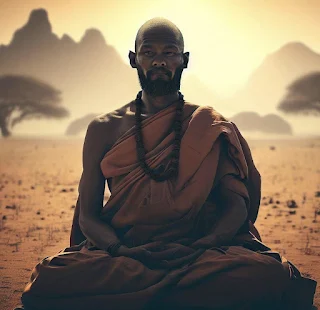How the British Empire Accidentally Planted Buddhism in Africa
The First Buddhists in Africa: How a Railway Project Changed East Africa’s Spiritual Landscape
In 1925, an unexpected chapter began in Africa’s spiritual history — the arrival of the first Buddhists. This moment came as the British Empire expanded its railway system across East Africa, forever altering the region’s cultural and religious landscape.
How British Railways Brought Buddhism to Africa
During the early 20th century, the British Empire sought to build a vast transportation network across its African colonies. One key project was the East African railway in modern-day Tanzania, connecting the port of Dar es Salaam to the interior towns of Morogoro and Tabora. The goal was to move goods, resources, and people efficiently across the region.
To complete this ambitious construction, British authorities recruited a diverse workforce — including laborers from India, Sri Lanka, and Southeast Asia. Among them were Buddhist workers who brought their faith, practices, and cultural traditions with them. Their arrival in 1925 marked the first recorded Buddhist presence in Africa.
Life of the First Buddhist Communities in East Africa
Railway work was harsh — long hours, tough terrain, and cultural isolation. Yet, the Buddhist workers created small supportive communities. They built makeshift shrines and practiced meditation to preserve their spiritual life far from home. These small but resilient groups planted the seeds of Buddhism on the continent.
Modern African Buddhist Leaders
Today, Buddhism in Africa has grown far beyond those early migrant communities. Several African-born leaders now guide local practitioners and adapt Buddhist wisdom to African realities:
- Ven. Bhante Buddharakkhita — Founder of the Uganda Buddhist Centre (2005), known for addressing social issues such as poverty and HIV/AIDS through Buddhist practice.
- Ven. Dhammarakkhita — South African monk promoting interfaith dialogue, peace, and mindfulness through retreats and community work.
- Zen Master Bon Yeon — South African-born Zen teacher blending African heritage with Korean Zen practice to make meditation more relatable to local audiences.
These leaders blend Buddhist principles with African cultural wisdom, making the faith accessible and relevant to local communities while encouraging peace and interfaith understanding.
Why This History Matters
The story of how Buddhism came to Africa shows the unexpected ways cultures meet and transform. What began with British railway expansion became a long-term spiritual exchange. Today, Buddhism’s presence in Africa reflects global migration, adaptation, and the search for meaning.
FAQ — Buddhism in Africa
When did Buddhism first come to Africa?
The first significant Buddhist presence began in 1925 when British railway projects in Tanzania brought workers from India, Sri Lanka, and Southeast Asia.
Are there African-born Buddhist teachers today?
Yes. Leaders such as Ven. Bhante Buddharakkhita (Uganda), Ven. Dhammarakkhita (South Africa), and Zen Master Bon Yeon have adapted Buddhism for African audiences.
Where can I learn about African spiritual diversity?
Explore more on African cultural traditions or read about African folktales and wisdom.





